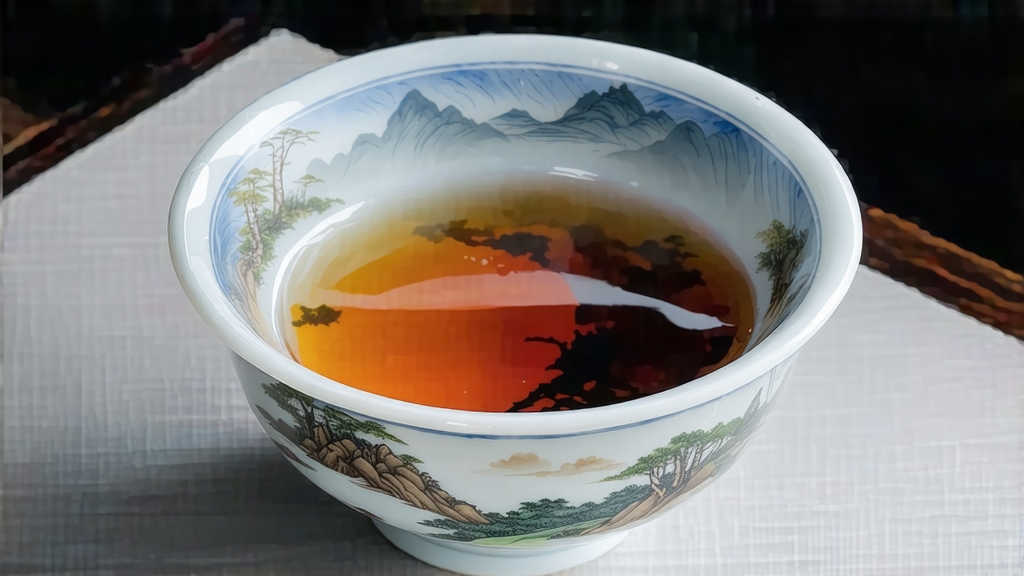
Walk into any serious tea house from Taipei to Tokyo, Paris to Portland, and you will sooner or later meet a compact, jade-green pellet that unfurls like a slow-motion firework. That pellet is Tie Guan Yin, “Iron Goddess of Mercy,” the most travelled icon of Chinese oolong culture. To the uninitiated it is simply a fragrant cup; to the people of Anxi county in southern Fujian it is heritage, livelihood, identity and daily prayer rolled into one aromatic sphere. This essay invites the international reader to follow the Goddess from her mythic birth to her present-day renaissance, learning how leaf, fire and human intention conspire to create a liquor that tastes like liquid mountain air.
-
Myth and Migration: a 300-year biography
Local monks still tell the story of Wei Yin, a devout farmer who lived in Anxi’s Songyan village during the Yongzheng reign (1723-1735). Every dawn Wei cleaned the tiny Guanyin shrine that leaned against a granite cliff, offering wild flowers and well water. One night the Bodhisattva appeared in a dream, guiding him to a hidden shrub whose leaves shimmered like iron yet exuded orchid perfume. Wei transplanted the shrub into his garden, roasted the leaves over charcoal embers, and shared the brew with neighbours. Miraculously, the infusion lifted fatigue, sharpened minds and softened hearts. Word spread; cuttings were carried across Minnan valleys; within two generations “Iron Guanyin” became the county’s dowry to China’s tea canon. Modern historians prefer a less celestial explanation—an adaptive mutation of the Huangjin (Golden Bush) cultivar—but they agree that Anxi’s unique red-clay hills, morning fog and sharp temperature drop between day and night give Tie Guan Yin a phenolic profile impossible to counterfeit elsewhere. -
From bush to ball: the five-act choreography
Unlike green tea that seeks to freeze freshness or black tea that pursues full oxidation, Tie Guan Yin performs a tightrope walk called partial oxidation (8-30 %). The dance begins in late afternoon when leaf-pickers climb terraced gardens at 600-1,200 m elevation, plaching the top three leaves and the bud—still stiff with noonday heat—into bamboo baskets. The first act, sun-withering, spreads the harvest on courtyard bamboo mats for twenty minutes of gentle dehydration; the edges redden, signalling the onset of enzymatic browning. Act two is indoor withering: leaves are piled 3 cm deep on rattan trays in an air-conditioned room kept at 23 °C, where they lose grassy notes and gain peach skin aroma. Act three, shaking, is the most athletic: trays are stacked and rotated every ten minutes for four hours, bruising the leaf margins so that oxidation occurs only at the rim while the heart stays green. Act four, fixation, fires the leaves in 230 °C drum roasters for ninety seconds, halting oxidation at the precise moment when floral volatiles peak. Finally, act five: the hot leaves are wrapped in white cotton squares and rolled under mechanical discs that press them into tight hemispheres; this repeated wrapping-and-rolling forces cell sap to the surface, locking in fragrance and allowing the leaf to survive six infusions without losing structure. A master processor can identify the exact “iron point” by touching the pellet—if it springs back like a fresh chestnut, the Goddess has consented to her transformation. -
Styles and schisms: light, medium, deep and aged
Global demand has split Tie Guan Yin into stylistic schools. The Light or “Modern Green Style” (qing xiang) emerged in 1998 when Taiwanese vacuum-packaging technology reached Anxi. It keeps oxidation near 8 %, uses low-temperature drying (70 °C) and ships the tea in nitrogen-flushed foil pouches. The cup is pale jade, aroma straight out of a June orchid greenhouse, taste like steamed bok choy kissed with honeydew. The Medium or “Traditional Style” (chuan tong) stops oxidation around 18 %, then spends an extra three hours charcoal-baking over lychee-wood embers at 60 °C. Liquor turns golden, texture gains the slippery weight of chicken broth, and the finish drifts into toasted coconut. The Deep or “Nong Xiang” school pushes baking temperature to 120 °C for seven minutes, creating cocoa-brown pellets that brew an amber